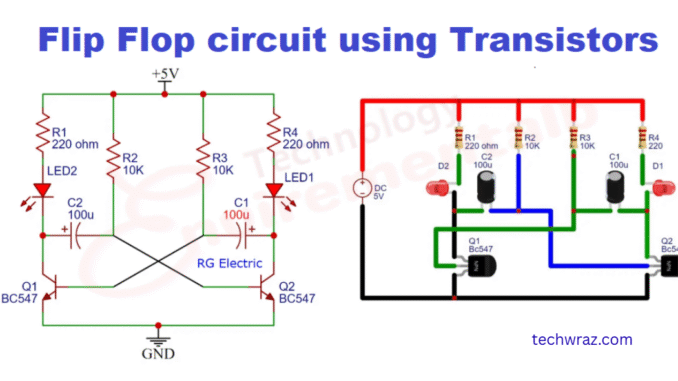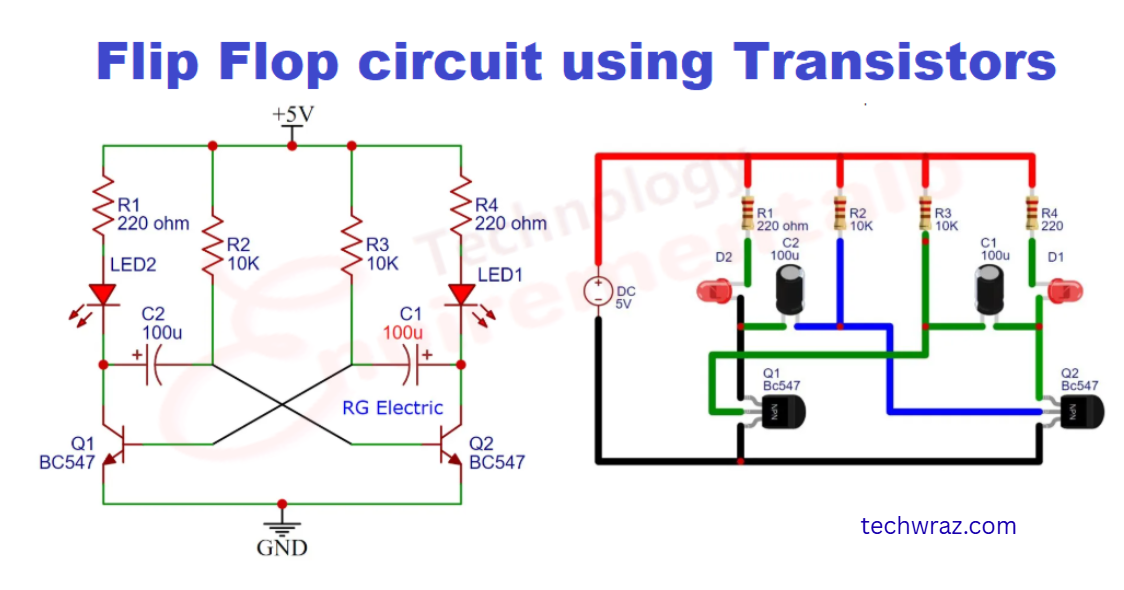
A latch is a logic circuit of electronics that has two stable states. A latch is a device similar to a transistor. It has 3 terminals, which function like a transistor base, collector, and emitter. In a transistor, when current is fed to the base, sufficient current flows from emitter to collector as long as the base is feeding, but in a latch, when current is fed to the base, current permanently starts to flow from collector to emitter even if the current at the base is removed.
So when we have to shut the circuit, we have to disconnect the power supply of the latch. Latch circuits are mostly used in alarm circuits. When we press the alarm button, the sirens flash until we shut down the alarm.
List of components
- R1=R2=R4=10K
- R3 = 100K.
- T1 = BC547.
- T2 = BC556.
- C1 = 1 uF/25 V.
- D1 = 1N4007.
- C1 = 1 uF/25 V.
- Relay = According to input supply.
In this logic circuit we are going to design a latch circuit using transistors. It consists of two transistors: BC547 NPN and BC557 PNP. We can easily explain it by using the circuit diagram given below.
As shown in the above figure, transistors T1 (BC547 NPN) and T2 (BC557 PNP) are configured in such a way that BC557 follows BC547 to either start or stop the conduction depending upon the trigger received from the T1 side.
BC557 also works as a buffer; it also has a better response even on very small signals from T1. As a small signal is given at the input (base) of T1 (bc547), it triggersT2.
The initial current of T2 also passes a small current to the base of T1.
It must be clear that t1 is NPN; that is why it responds with positive, and t2 is PNP; it responds with negative.
Calculating Transistor Biasing
It is the basic formula for both transistors.
- VBE = 0.7V
- IE = (β + 1)IB ≅ IC
- IC = βIB
You May Also Like
- Difference between BC547 and BC557 Transistor
- BC547 transistor pinout Datasheet
- C945 Transistor Pinout Datasheet
- Solar drone with wingspan wider than jumbo jet could fly for months
- Change the Direction of a DC Motor
- 12-volt battery level indicator
- An Introduction To Arduino
- The Future of Passwords: Are Biometrics and Passkeys the Solution?

